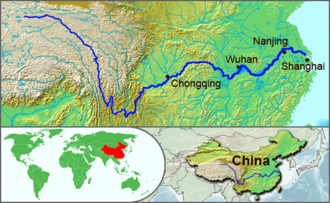Environmental Challenges Facing the Yangtze River

Introduction
The Yangtze River, the longest river in Asia and the third longest in the world, plays a crucial role in the ecological and economic landscape of China. Spanning over 6,300 kilometres, it supports the livelihoods of nearly 400 million people, and its basin is home to incredible biodiversity. However, it is currently facing significant environmental challenges that require urgent attention.
Current Environmental Issues
Recent reports indicate a rapid decline in water quality and biodiversity within the Yangtze River. Agricultural runoff, industrial waste, and urban pollution are contributing to elevated levels of chemicals and pollutants in the water, creating a detrimental environment for aquatic life. For instance, the population of the critically endangered Yangtze River dolphin, or baiji, has seen a substantial decrease, making sightings exceedingly rare. Additionally, overfishing and habitat loss pose serious threats to the ecosystem.
According to the Ministry of Ecology and Environment of China, the Yangtze region has experienced warming temperatures and altered precipitation patterns, leading to increased frequency of droughts and floods. In 2020, the river faced one of its worst droughts in decades, affecting agriculture and water availability for millions of residents. The ongoing impact of climate change is amplifying these challenges, making it imperative to implement sustainable practices.
Government and Community Responses
In response to these alarming conditions, the Chinese government has taken several measures aimed at improving the situation. Initiatives such as the Yangtze River Protection Law, enacted in early 2021, aim to safeguard the river’s ecosystem by regulating pollution and promoting biodiversity conservation. The government is also investing in afforestation projects and creating protected areas to restore habitats and improve water quality.
Local communities are joining the effort, engaging in river management programmes and educational campaigns to raise awareness about pollution and conservation. Non-governmental organisations have also stepped in, collaborating with authorities to monitor the health of the river and advocate for sustainable practices.
Conclusion
The challenges facing the Yangtze River are significant and multifaceted, requiring collaboration among the government, communities, and environmental groups. The health of the river is not only vital for ecosystems and wildlife but also for the millions of people who rely on it for their survival and livelihoods. Investment in sustainable practices and collective action will be critical to reverse the current trends and ensure that the Yangtze River remains a lifeline for future generations. As awareness increases and efforts multiply, there is hope for restoring this magnificent river to its former glory.









